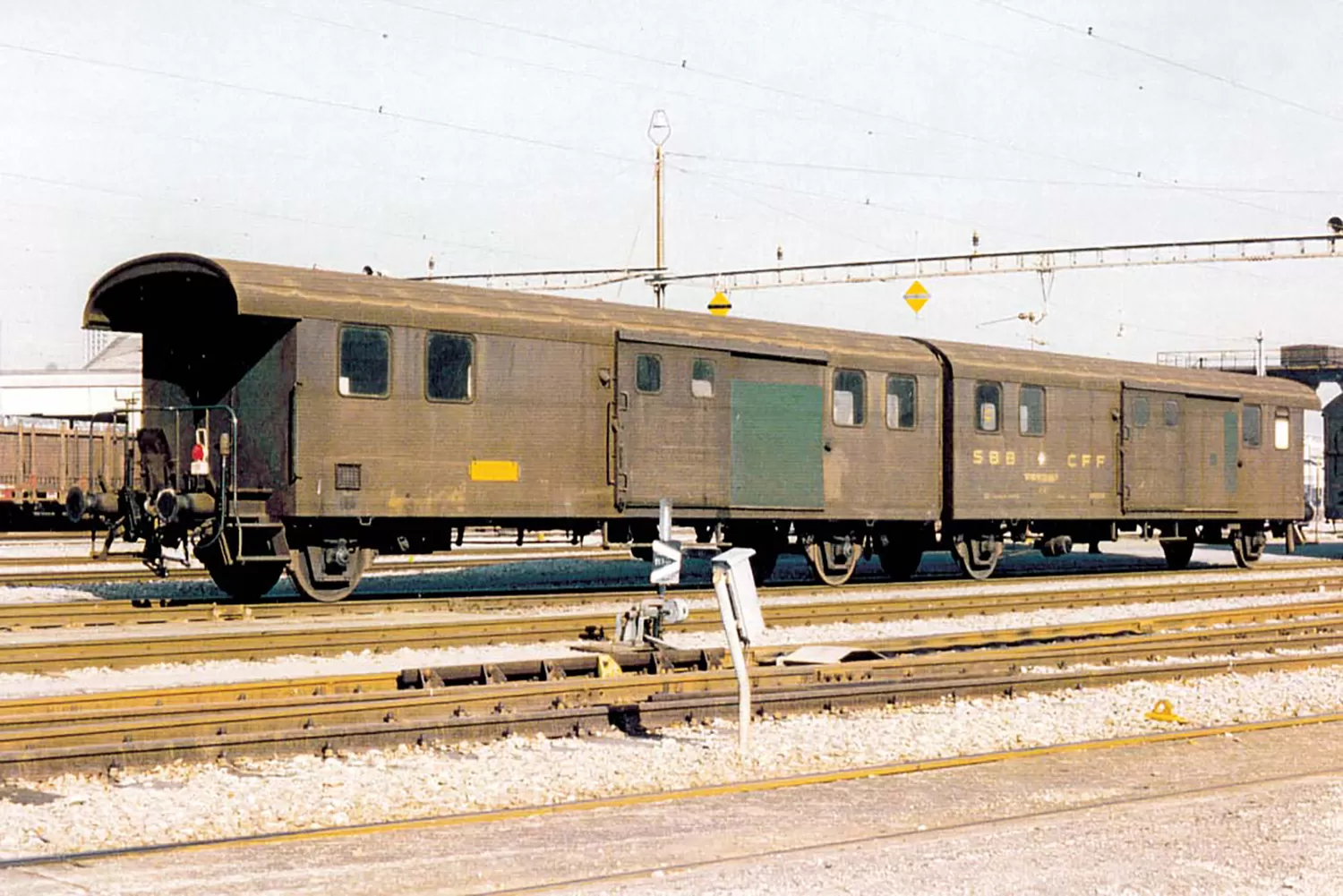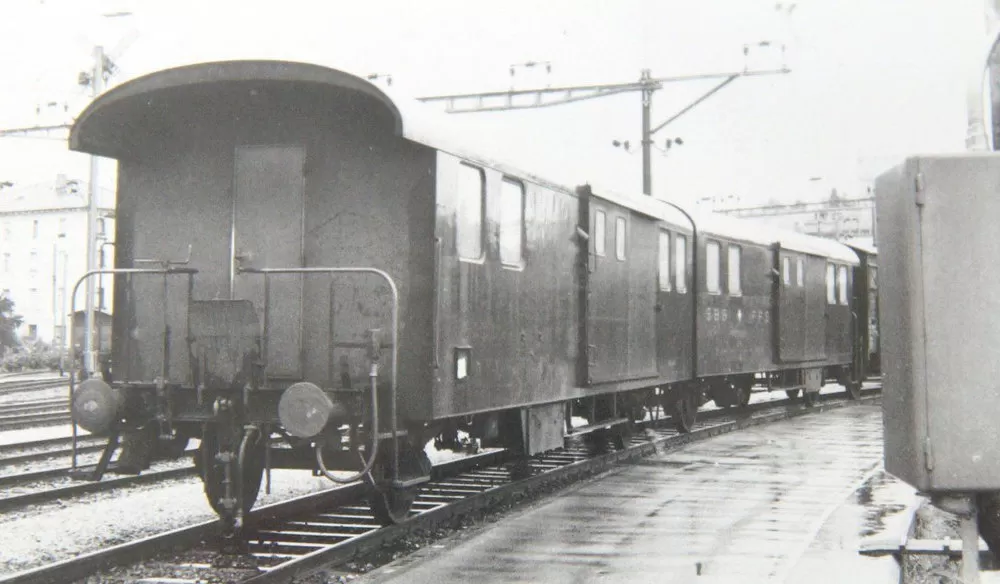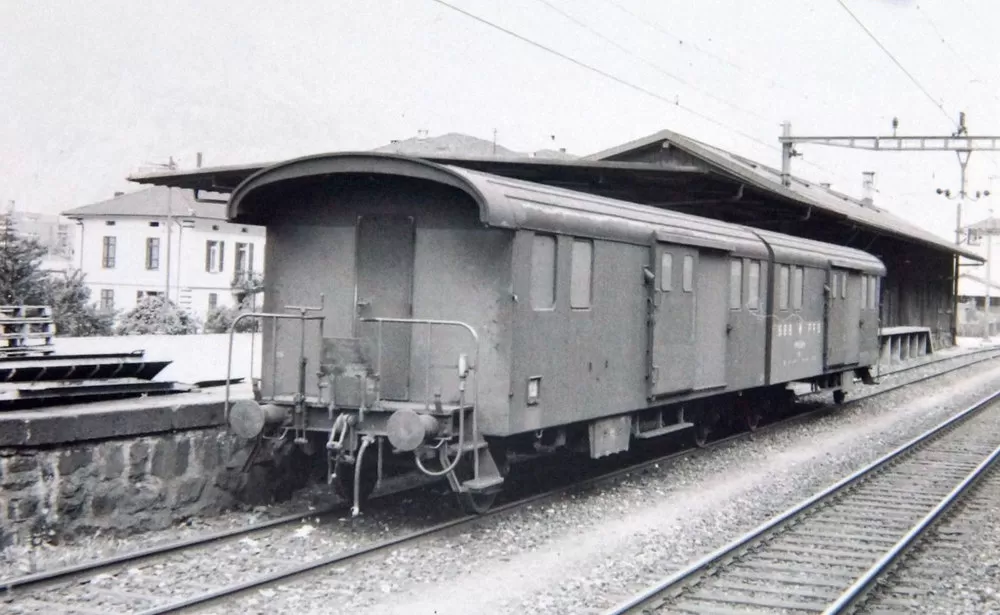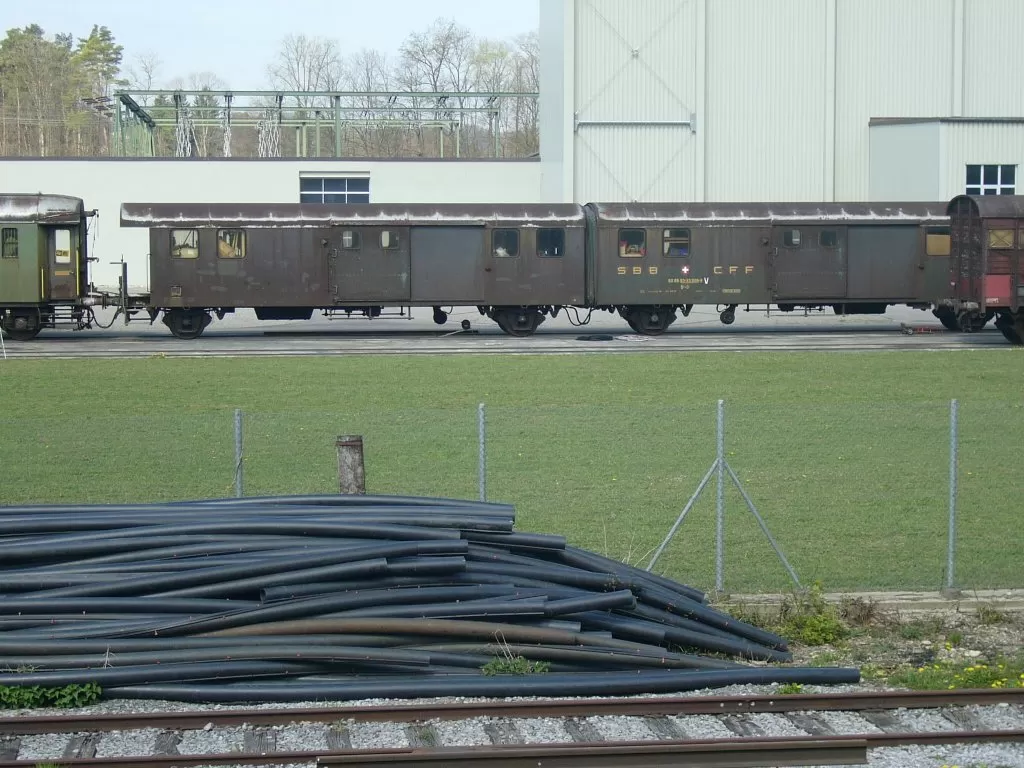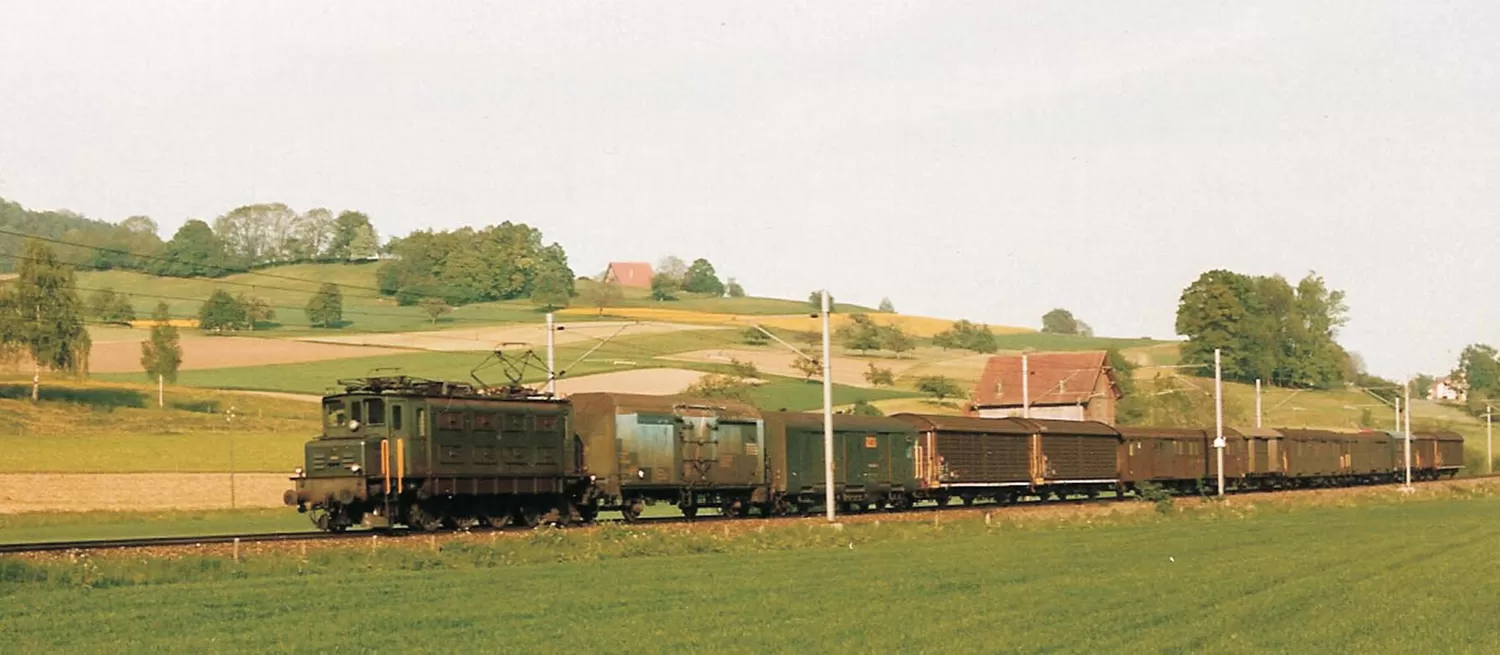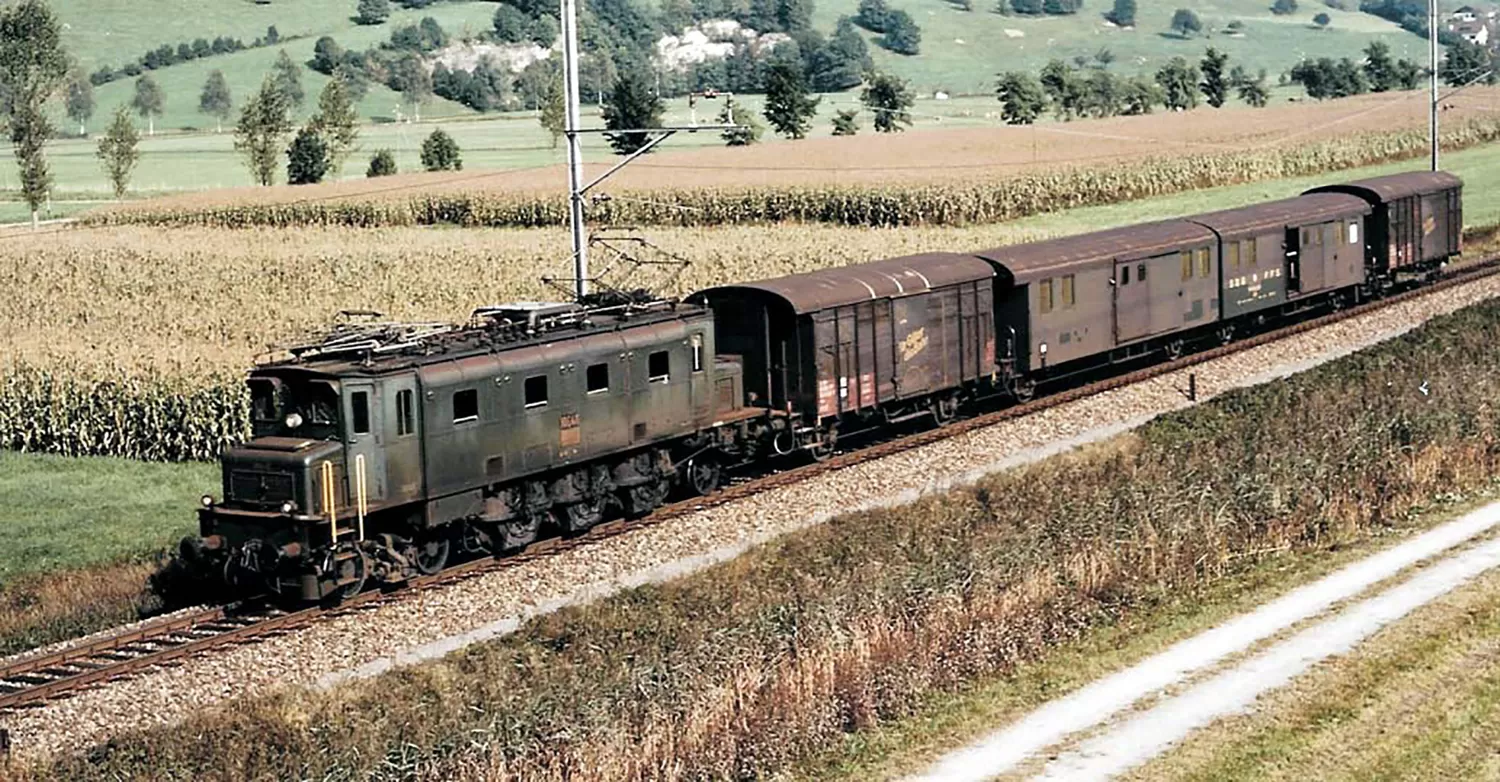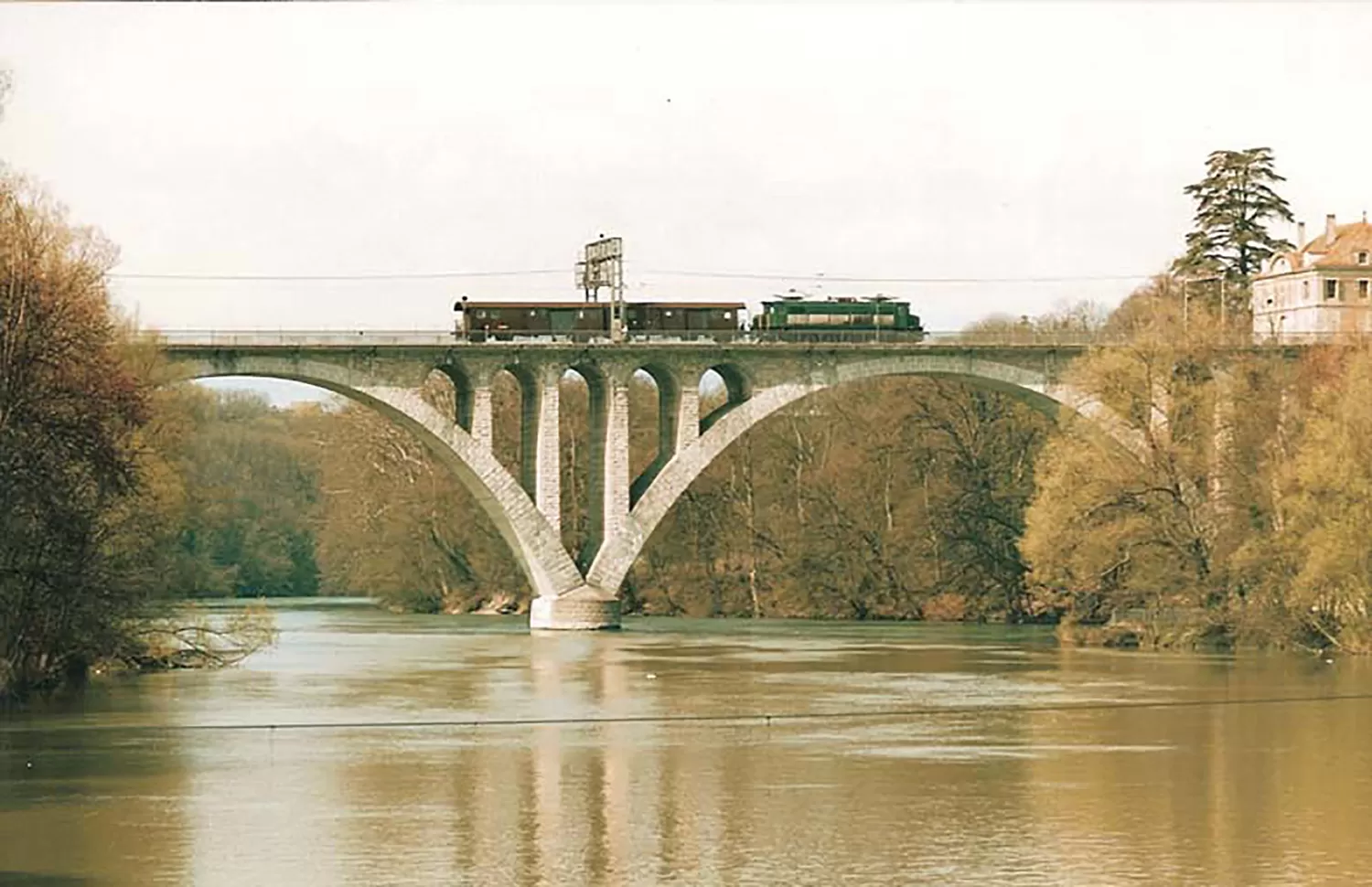After the nationalisation of the private railways, SBB had in their
fleet a wide variety of car types and some were not capable to
handle the new challenges ahead. It is the reason why some of them
were converted into new cars.
It is the case of the D2-D2 cars. Between 1962 and 1963, 35 units
of the SBB parcel-sorting van were built in several series by the
SBB main workshops in Chur and the private enterprise „Flug- und
Fahrzeugwerke Altenrhein“ (FFA) using certain elements of withdrawn
carriages (mainly F2 carriages). This explains why the several
series slightly differ from each other (smooth and ribbed roofs,
not all series have protection grids on the inside of the windows
etc.).
The double-unit with fix couplings allowed the train guard to move
freely from one half to the other and to sort the goods according
to their destination. The cars were fitted with several shelves for
luggage, a certain number of hooks for bikes and a big grid
allowing the evacuation of melting ice used for fish transport
(quite frequent at the time).
In contrast to the SBB standard vans, the D2-D2 type had no
prisoner cell. At one end of the double-unit a small cabin – well
heated in winter – had been mounted for the train guard to sort
documents. On the other side there was a toilet.
The D2-D2 units reached top speeds of 125 km/h allowing the cars to
be used in passenger trains. However, due to the open platforms and
the enormous loading space, this mainly happened on days with peak
traffic (like during winter sport holidays).
The aluminium sliding doors were silver grey upon delivery. At that
time, the carriages did not get their regular clean-up in washing
facilities. It is therefore natural that the doors got gradually
weathered and looked like the rest of the car body. The sliding
doors could be left open either in an intermediate position or
completely giving sight of the yellow painted handrail that could
be fastened on top for loading or unloading purposes.
The parcel-sorting van type D2-D2 could be seen all over the SBB
network in express goods trains, mostly in combination with postal
vans, express goods or food cars. With the introduction of the
nationwide express delivery system the use of these vans dropped
rapidly, in most cases they were replaced by 4-axle vans. However,
some units survived until the nineties. One single representative
numbered 50 85 93-33 008-9 escaped from scrapping.
Do you have additional informations regarding this vehicle?
Help us writing the history of D2-D2! Your knowledge is precious for us and the entire community, do not hesitate to share your facts, photos or videos:
Discussion forum


